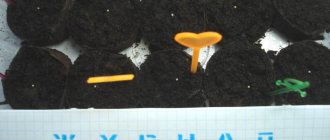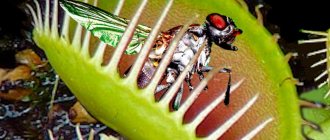Delicate fragile flowers of indoor violets (Saintpaulias) fascinate with their beauty, diversity and originality. As soon as one plant appears in the house, the desire arises to cover the entire windowsill with them.
For those who do not want to spend money on buying an adult violet, information about where you can buy indoor violet seeds and how to grow violets from seeds yourself is interesting.
Popular varieties of violets
- Flamenco. The flowers are semi-double, lilac-pink in color with a greenish fringe and a bright yellow core. The green “ruffle” is a distinctive feature of the species.
- Fire moths. The flowers are red or burgundy, with simple petals with slight fringe. Less common with a light border.
- Mars. With large buds of a crimson hue, distinguished by the presence of a wide frill. The edges may be decorated with a white border.
- Rococo Viol. These homemade violets are double varieties. Their flowers are deep blue in color. The shape resembles curly balls that go perfectly with the light green foliage.
- Rosemary. Plants with double star-shaped flowers. The main color is pink, with ink splashes and a lightish border.
- Rococo Rose. They look like small roses, delicate pinkish color. They belong to terry varieties.
How to plant violet seeds?
To successfully grow Saintpaulia from seeds, you need to complete a number of preparatory steps and approach each of them very seriously. Here's what you need to do before planting violet seeds at home:
- purchase high-quality and healthy seeds;
- properly prepare the soil mixture;
- choose a suitable flower pot;
- prepare seed material for sowing;
- carry out sowing using technology.
Purchasing or preparing substrate
Individual flower growers purchase ready-made substrate for flowers at retail outlets. This is also the right approach, since it is correctly combined and contains all the necessary nutrition.
However, if you have financial difficulties, you can make the soil mixture yourself. The substrate is usually prepared from the following ingredients:
- turf land - 50%;
- peat - 40%;
- sand - 10%.
Attention! It is well known that violet prefers slightly acidic soil. For this purpose, peat is added to the mixture.
Selecting a suitable pot
Growing violets at home cannot be called an extremely difficult task, but to obtain results you will have to fulfill a number of requirements
It is very important to choose the right pot for her. Do not use large pots, since violets have few roots and will not develop normally in a large pot.
Many gardeners who grow Saintpaulia from seeds use plastic cups rather than pots. The violet feels great in them and develops normally.
You can use plastic cups to germinate seeds.
Preparing for sowing
Some varieties of violets, such as the Usambara violet, have very small seeds. In this connection, they are pelleted before planting. It is easier to maintain the planting pattern with pelleted seeds and the seed material is used more economically.
Instructions on how to properly sow violet seeds with panning:
- First stage. The seeds are moistened with water and the same amount of crushed charcoal is added to them. The mixture is poured into a jar, a lid is put on it and shaken for several minutes. As a result of shaking, coal dust is fixed on the seed shells, increasing their size;
- Second phase. Sand is added to the composition and shaken again. The seeds prepared in this way are placed in containers on moist soil and covered with a lid. The container should be in a warm place out of direct sunlight. During the germination process, you need to moisten the substrate and control the temperature until the seeds germinate.
Technology
When all the preparatory work has been completed, you can proceed directly to sowing annual or perennial violets. It must be carried out according to the following algorithm:
- sift the soil mixture through a sieve;
- Fill the sowing containers with the sifted mixture;
- spill the substrate with a solution of potassium permanganate;
- wait a while for the substrate to dry;
- level and slightly compact the surface of the substrate;
- make shallow grooves on the surface;
- sow violet seeds into the furrows;
- Cover the seeds with a thin layer of the mixture on top;
- Spray the soil after sowing.
Care
After the seeds are planted, you need to monitor the temperature, since it determines how long the violets will sprout:
- at a temperature of +20 degrees, the first shoots can be expected approximately 20 days from the day of sowing;
- if the temperature of the substrate is raised 5 degrees higher, then the first sprouts of Saintpaulia will appear on the surface in 15 days.
Getting a plant from seeds
For a positive result of growing violets from seeds, you need to adhere to certain rules:
- Take a plastic container that is wide and not deep, and fill it with a thin layer, up to 3 cm, of special soil consisting of a mixture of peat and earth. You can buy ready-made soil or prepare it yourself, observing the proportions; there is no need to fertilize it at first. To ensure oxygen exchange, the pot must be placed on a special raised saucer; its design allows oxygen to pass through the drainage hole.
- Violet seeds should be purchased in specialized stores. Preparing seeds for sowing involves mixing them with sand in a one to one ratio.
- The seeds germinate well in a warm and bright place, so the pot should be covered with a transparent film or lid and placed in a bright place. Direct sunlight and drafts should be avoided. On a note. The soil should always be slightly moist; a spray bottle works well for this. The ideal temperature for germination from seeds is considered to be 22-25 degrees Celsius.
- The first sprouts from the seeds begin to germinate already on the 20th day, all this time the mixture should be moistened with a spray bottle.
- The first picking of seedlings should be done when they reach a height of about half a centimeter and produce their first leaves. Plant at a distance of 2 cm from each other in fertile soil, which should be fertilized with charcoal.
The next transplant should be carried out as needed, when the sprouts begin to interfere with each other and are already planted in separate small containers. Before transplanting into a permanent pot, time must pass for the root system to strengthen.
The peculiarity of growing violets from seeds is that the new plants that sprout are of the same size and have multi-colored flowers.
From the video you will learn how to grow violets from seeds:
Planting seedlings
Sowing seeds is done in even paths on the surface of the ground , covering it with it or a thin layer of sand. They are planted in a large box or separately, 2 achenes in a small container. Any vessels will do, the main condition is a drainage hole at the bottom.
After placing the achenes in pots, they need to be insulated . A greenhouse is made from film or glass. Future seedlings need warmth, darkness and sufficient moisture. Moisten the surface of the earth with a spray bottle. This method will avoid soil erosion and damage to young shoots.
The soil is moistened by spraying.
How to plant a violet leaf without roots?
Selection of capacity
A good container for rootless propagation directly into the ground can be small cups or pots, up to 200 ml in volume and about 5 cm in diameter.
Experienced violet growers advise using disposable plastic cups for these purposes.
Their transparency allows you to monitor the condition of the soil, and the material is easy to make drainage outlets.
Priming
An important component when planting a leaf with a cutting is the selection and arrangement of the soil mixture. If ready-made soil is purchased, it should be intended for flowering ornamental plants
Leavening agents made from inert materials or sphagnum moss must be added to it.
Experienced violet growers prefer to prepare the mixture themselves. To do this, they mix perlite and vermiculite in equal proportions, without adding them to the soil composition. Perlite provides breathability to the roots, and vermiculite provides moisture absorption and looseness
Inexperienced flower growers are better off purchasing ready-made soil and adding perlite and sphagnum moss, which has antibacterial properties.
Inexperienced flower growers are better off purchasing ready-made soil.
Some gardeners recommend growing on pure perlite, but with this composition you should strictly monitor the humidity level. A fragile plant without a sufficient amount of moisture, and perlite is not a moisture-intensive component, dries out quite quickly, which can result in death for such a weak future plant.
Selection and preparation of planting material
The correctly selected material is important and decisive for the further development of Saintpaulia, so this step must be taken responsibly. If you thoroughly examine the structure of the violet, you will notice that the leaves are arranged in rows on the rosette
First of all, you need to decide which row is preferable to take the material from:
- 1st, bottom row - the leaves are relatively old and, due to their age, may not bear children for a long time. In addition, their close location to the ground often provokes the picking up of various diseases and pests;
- 2nd-3rd rows - with young, already strong leaves. The most optimal option for planting material;
- the middle of the rosette - the leaf is usually small, and if torn off there is a risk of damage to the growth point of the Saintpaulia, which can lead to unpredictable consequences;
- the upper rows are young leaves that have not yet become stronger and have not gained enough energy.
The second stage is the selection of the leaf itself for propagation:
- the sheet must be free of any kind of defects (stains, scratches, breaks, etc.);
- must be healthy, with the color characteristic of the variety;
- the structure of the sheet plate should hold its shape well and be elastic.
Important! The leaf is taken only from a healthy plant!
Often, planting material has to be taken from friends or somewhere else, which causes it to wither during long delivery. In this case, it should be immersed for 1.5-2 hours in clean, warm water, slightly tinted with potassium permanganate, and then dried.
The final step before planting is leaf preparation.
Separating a leaf blade from a plant can be done in two ways:
- a simple break;
- using sharp cutting tools.
Experienced flower growers recommend using a sharp knife or pruning shears, performing the operation in a more civilized and safe way.
The cut should be made with a very sharp tool.
The correct cut is considered to be a cut at an angle of about 45° (the area of root formation and nutrition increases). Do not forget about disinfecting the cutting tool and treating the cut site on the mother plant with crushed activated carbon. The length of the stump should be at least 5 mm and no more than 4 cm. Longer cuttings should be shortened.
Which pot should I use?
- The best option is plastic containers. The reasons for this choice are that the soil retains moisture longer in a plastic pot than in a ceramic one, and the lower leaves of the plant, which, due to the nature of their growth, almost lie on the edges of the pot, are prone to wilting and this forms unsightly darkening on the clay surface .
- If you really like to grow violets in clay dishes, you can make a backing for the halo of the lower leaves from sisal or coconut fiber, or a piece of raffia will also work. You need to cut out a circle, about a centimeter larger than the diameter of the pot, and also cut out the center of the substrate, a centimeter and a half larger than the circumference of the violet “bouquet”. To make the substrate look aesthetically pleasing, it is advisable to choose a color that is in harmony with the color of the pot, or tone on tone.
- The violet feels good in a pot that is three times smaller than the diameter of the rosette. As the diameter of the rosette increases, the width of the pot should also increase.
- There is a peculiarity here that Saintpaulia begins to bloom poorly if the pot is more than ten centimeters in diameter. Therefore, if the violet has already grown, then it is better to carry out a rejuvenation procedure by removing the largest leaves.
- When using an old pot, you need to rinse and disinfect it.
- It is necessary to have holes in the bottom to remove excess moisture.
Watch a video about choosing the right pot for violets:
Main varieties
We recommend that you read
Violets are distinguished by the following characteristics:
- 1 Sizes of sockets: micromini (up to 6 cm), mini M (10-15 cm), midi (15-20 cm), standard (20-40 cm) and large (from 40-60 cm in diameter). Some varieties are hanging or trailer indoor flowers.
- 2 Inflorescences. The types are classic, star-shaped, bell-shaped, wasp-shaped or spider-shaped. Petals can be semi-double, double or single. In hybrid varieties, they can be pointed, rounded, corrugated, smooth or torn at the edges. Based on color, they are divided into single-tone, two-tone and multi-tone.
- 3Leaves, more precisely their type and color. They can be oval, round, kidney-shaped and elongated. The edges of the foliage are entire, corrugated, serrated or wavy. They are usually olive, dark brown, green or greyish.
The following varieties can be grown at home:
- 1Caprice. The inflorescences are white, double. The fringe on them is greenish. The foliage is very variegated. They have a wavy structure.
- 2Macho. The flower is purple, but the edges are white. Terry petals. The leaves are simple in shape and green in color.
- 3Your Majesty. This is a pink Saintpaulia with double petals that have wavy edges. The foliage is bright green.
- 4Sea Wolf. A very large blue flower with a net pattern on its petals. The leaves are dark.
- 5Water. The inflorescence itself is blue, but turns into pink and then bronze-green. Light colored leaves.
- 6Jabot. Dark blue inflorescence. Along the edges there are light green ruffles. The leaves are also wavy.
- 7Tomahawk. This violet is a bright red hue. Blooms profusely. The leaves are dark green.
- 8Max Black Pearl. A black violet with a purple tint. Velvet petals. The foliage is small. The plant is very compact.
- 9Parisian secrets. The inflorescence has a dark black-purple hue and a purple-red pattern. There are whitish ruffles. The foliage is variegated.
There are other names for both the domestic violet itself and individual varieties. Now varieties such as Frozen, Green Lace, Irish Cream and others are appearing, which are distinguished by their greenery. New varieties have also appeared with pure yellow petals or with a pattern of this color on them - these are Lemon Kissis, Sunkist Rose and Worm Sunrise.
Classification by petal color during flowering
How to propagate Chinese rose at home
The colors of modern hybrid forms of violets differ significantly from the first two natural species. Now the abundance of colors is simply mesmerizing, and you can choose any one for yourself, satisfying even the most demanding taste.
White, white-cream, light pink, salmon pink, pink-fawn, hot pink, coral pink, pink-lilac, red, wine red, raspberry, cherry, beetroot, red-purple, burgundy, black cherry; pale blue, light blue, bright blue, dark blue, blue-violet, lilac, lilac, black-violet; ivory, lemon, yellow, green and many others. Many sources also contain definitions such as magenta, amethyst, burgundy, chartreuse, etc. It is noteworthy that the color of the petals during the flowering of Saintpaulia depends on the level of acidity in the soil. As the pH of the soil changes, the flowers may lighten or darken.
Very often there are flowers with two or more tones of the same color, but of different saturation. For example, pink flowers with a coral center, lilac flowers with darker, plum tips; crimson flowers with lighter lower petals. The reproduction of two-tone color primarily depends on the lighting in which the violets grow. If the lighting is longer and more intense, then the richness of the two-tone color can be most fully revealed.
Bicolor and multicolor mean the presence of two or more primary colors, such as blue and white; red and white; blue, red and white and many more different options. The group to which violet can be classified depends on the arrangement of flowers and pattern. The following groups of multi-colored violets are distinguished: bordered, including those with a Geneva-type border, fancy, “chimeras” with one or several spots (spotted), with a ring or striped pattern.
Bordered indoor violets (Saintpaulias) have a border along the edge of each petal. The white border of different widths is called “Geneva”. A colored border that differs from the color of the rest of the flower can be a two-tone option. For example, coral flowers with a light pink border. And, on the contrary, red flowers with a blue border are a two-color option.
It happens that the petals have two borders of different colors at once, for example, a purple border turning into a white border.
Look at the photo - the Usambara violet (Saintpaulia) has an unusual fantasy coloring that lies in the appearance on the petals of dots, specks, splashes, strokes, dashes, polka dots of contrasting colors:
They are scattered throughout the petal or grouped in the form of a border. These colors of violets are very elegant, and therefore especially popular among flower growers. True, such violets are very capricious. If the temperature regime, lighting conditions are violated, or recommendations for the preparation of soil mixtures are ignored when propagating by leaf cuttings, specimens appear that can bloom with pure purple or plain blue flowers. It is also possible for plants to appear with contrasting segments occupying up to half the flower. In this case, flowers with a standard color may be located on the adjacent peduncle.
“Chimera” is an unusual color of multi-colored Saintpaulia. When propagating Saintpaulia from leaf cuttings, you will not get the same color. Rays diverge from the center of the flower to the tips - white on a crimson background, purple on lilac, blue on white, etc. There can be a great variety of color options for violets (Saintpaulias). Such plants are propagated by lateral shoots, dividing the bush or peduncles.
Care
To get beautiful and healthy Saintpaulias, you need to take care of them. Lighting, temperature, location of the flower, and appropriate care are important. Let's consider the basic rules for growing violets, the observance of which will allow you to achieve the desired result.
- Violets need light, but despite this, it is better to isolate them from direct sunlight.
- It is bad for the flower when the leaves come into contact with the glass.
- Violets love moisture, but you should not water them with cold water, or get them on the leaves when watering. You need to water regularly, as the soil dries, but you should not overwater the violet.
- It is necessary to promptly remove dried flowers and damaged leaves.
- Violets are afraid of temperature changes and cold.
- Fertilizing is carried out once every two weeks using mineral fertilizers (10 g per 3 liters of water). Plants especially love nitrogen. Its deficiency can lead to poor growth and lack of flowers.
- When replanting a plant, it is necessary to make drainage from perlite, moss, and expanded clay balls.
- The lower leaves should be left slightly above the soil. A rosette is placed at ground level. Wrong choice of depth leads to poor flower growth.
Some gardeners propagate violets using leaves. To do this, you need to take a few leaves from an adult violet and place them in a container of water. Choose small jars made of dark glass so that the light does not shine directly on the cut, but the container is transparent. The stalk must be long. The cutting is cut diagonally. Change the water regularly.
In about a month, roots will appear. After they appear, plant the cuttings in the ground. A new rosette of leaves is formed. If you are planting several sprouts in one container, do not miss the moment of picking
It is important that the plant gets stronger. This method is faster than propagation from seeds, but the plant may turn out weaker and wilder
Propagating violets is a wonderful hobby. Find one of the many varieties to suit your taste and get a real flower garden that will delight you every day. Despite some subtleties of care, violet is not a very fastidious plant, so even a novice gardener has a chance of successfully breeding these flowers.
Possible diseases
If Saintpaulia is unpretentious in care, then in terms of diseases it is quite problematic . The plant has delicate stems and is therefore particularly vulnerable to aggression from a diverse range of pests. The most common fungal infections that occur are powdery mildew, insidious late blight, dangerous fusarium, gray rot and rust. Common causes are lack of light or direct exposure to the sun, excess or lack of fertilizing, temperature changes, drafts and cold, excess watering, too large a pot. More nuances about these and other flower lesions and methods of combating them can be found in this article.
Powdery mildew
Difficult to remove white coating on leaves. Predisposes to the appearance of powdery mildew. High humidity and cold contribute to this. Saintpaulia is treated by alternating the drugs bytleton, topaz and saproli . You can dust the leaves with sulfur powder, then briefly cover the Saintpaulia with a plastic bag.
Insidious late blight
Late blight disrupts the surface of the stems, giving a brown tint. The leaves begin to fall off and the trunk becomes bare. This is the action of a fungus that penetrates through the affected areas into the roots.
It is important to start treatment in a timely manner, otherwise Saintpaulia will die as soon as possible. The violet must be removed from the pot and the affected parts of the root system removed. They are brown in color.
If the fungus has eaten the entire root, you need to leave only the cutting and then follow the instructions for rooting the leaf in water. Take a new soil and pot for planting the cutting .
Dangerous fusarium
The fungus that infects violets in this case is called fusarium. The petioles of leaves and roots rot. The petioles begin to turn brown, and the roots darken and separate from the soil. As both treatment and prevention, you can water the plant with fundozol. Dried ground parts and rotten roots are removed.
The reasons are mainly technical - a large pot, temperature changes, cold watering, heavy soil.
Gray rot
A fluffy coating in brownish-gray tones on flowers and foliage is a botrytis fungus . It can multiply in a short time and destroy Saintpaulia.
Typically, infection occurs from plant fragments in the soil; spores can be found in any type of soil; infection occurs rapidly. Therefore, you should not neglect soil disinfection.
The brown parts are removed, the affected areas are powdered with fungicide powder. The plant is transplanted into new soil and pot .
Factors that provoke infection are excessive watering and temperature changes.
Rust
The initiators are rust fungi. Yellow-brown tubercles appear on both sides of the leaf. High humidity and water getting on the leaves during watering create favorable conditions for spores to ripen.
Spots on the leaves are not always a symptom of this disease . They can appear due to a lack of light, excessive complementary feeding, drafts or direct exposure to the sun.
When and how are seeds collected?
To use the seeds for further propagation of violets, they must be collected correctly. It is difficult to track the moment of full ripening, so at home it is better to remove the box from the peduncle in advance so that the seeds do not fall into the same pot when the doors open on their own. This should be done when the peduncle dries out and the fruit turns brown.
The main thing is that the seeds are viable. This may not happen if the box is removed too early. If you collect the fruits 3-4 weeks before the natural opening of the fruit, then the germination of the seeds will be as much as 80%.
After separating the fruit capsule from the violet, it must be finally dried in a warm room. This will take 1-3 weeks. You can open the dried box with the tip of an ordinary needle. The seeds are hidden inside the box.
Basic care elements
Some varieties of violets, especially large-flowered ones, take a long time to germinate. The timing of the appearance of the first sprouts can exceed 1 month
If seeds are bought in a store, then you should pay special attention to this feature. Without waiting for the shoots to sprout, the grower mistakenly disposes of the material
To prevent seedlings from being exposed to blackleg disease, they must be ventilated and not flooded. The soil should be moist, but not watery. If a grower accidentally “nailed” a sprout to the ground with water, then it must be urgently lifted with a toothpick or a needle. A weak plant will not be able to straighten up and will die.
Ventilate seedlings to avoid rotting.
The viola bush requires space to grow and develop, so in the two-leaf phase the seedlings are planted in separate containers. If violets are used for flowerpots or balcony boxes, then the seedlings are planted directly in them, maintaining the recommended distance between plants.
Important! When transplanting plants, they are buried down to the first leaves.
All types and varieties of violets respond very well to fertilizers.
Viola feeding time:
- young shoots are sprayed with a solution of a growth stimulator;
- weekly fertilizing includes watering with diluted mineral fertilizers at the root;
- After planting in the ground, flowers need monthly complex fertilizer.
Garden violets do not tolerate fresh manure and droppings as fertilizer. It causes burns and death of the bush. It is best to use autumn humus, leaves and special fertilizers for flowering plants.
Soil preparation
To plant Saintpaulia seeds, you can use ready-made soil. You can also make your own flower nutrient mixture. The ready-made version can be purchased at any store specializing in indoor plants.
Here are several options for compositions that the gardener can make himself.
- You should mix the deciduous, peat, turf and coniferous components in a ratio of 3: 2: 1: 1. Then you need to add crushed sphagnum, vermiculite or, for example, perlite, for loosening. It is also advisable to use charcoal.
- You need to mix the coniferous and turf parts in a 1: 1 ratio. Then you should add peat and crushed sphagnum in the same quantities. You should also add a double dose of the leaf component and half of the sand (1: 1: 1: 1: 2: 0.5). It is useful to add coal as a sorbent, fertilizer (K, Ca, F), as well as an antibacterial composition.
- It is necessary to take garden soil from the garden bed where legumes were grown. Soil from mole holes is also suitable (it is the most granular). For 4 parts of land you need to take 1 part sand and 1 part black peat.
Each ingredient should be sifted and cleared of plant debris so that rotting does not interfere with the healthy growth and development of seedlings.
There are many recipes for soil for violets, but none is the only correct one. It all depends on the quality of the ingredients. It is important that the soil is not very greasy, loose, absorbs moisture well, but at the same time allows air to pass through so that the roots do not rot. You can use different ratios of parts to obtain your mixture experimentally.
Growing violets from leaves in soil
If you adhere to the opinion of experienced flower growers, they advise planting violets directly in the ground, as the plants are stronger and more resilient, and they also produce more children. How the process of growing violets occurs is discussed below.
To make it easier to plant violets in the soil, you can buy synpolia soil at a specialized store. The following disintegrants must be added to it:
- Styrofoam;
- vermiculite – perfectly loosens the soil and absorbs moisture;
- sphagnum moss;
- perlite is the main one, it is always used in growing violets.
Rooting of violets in the soil occurs according to the following scheme:
- The stem of the leaf must be pulled to the side and broken, then it is cut off at an acute angle.
- It is necessary to release the stem and leaf into the manganese solution for a few seconds.
- Then leave to air dry for about thirty minutes.
- A disposable cup is filled with warm, moist soil.
- Plant the violet leaf and stem and compact the soil around it.
- There is no need to water the plant.
- It is worth covering the glass with the flower with plastic wrap. Watering is carried out once every seven days. In order for the violet leaf to take root faster, it does not need to be fertilized additionally.











